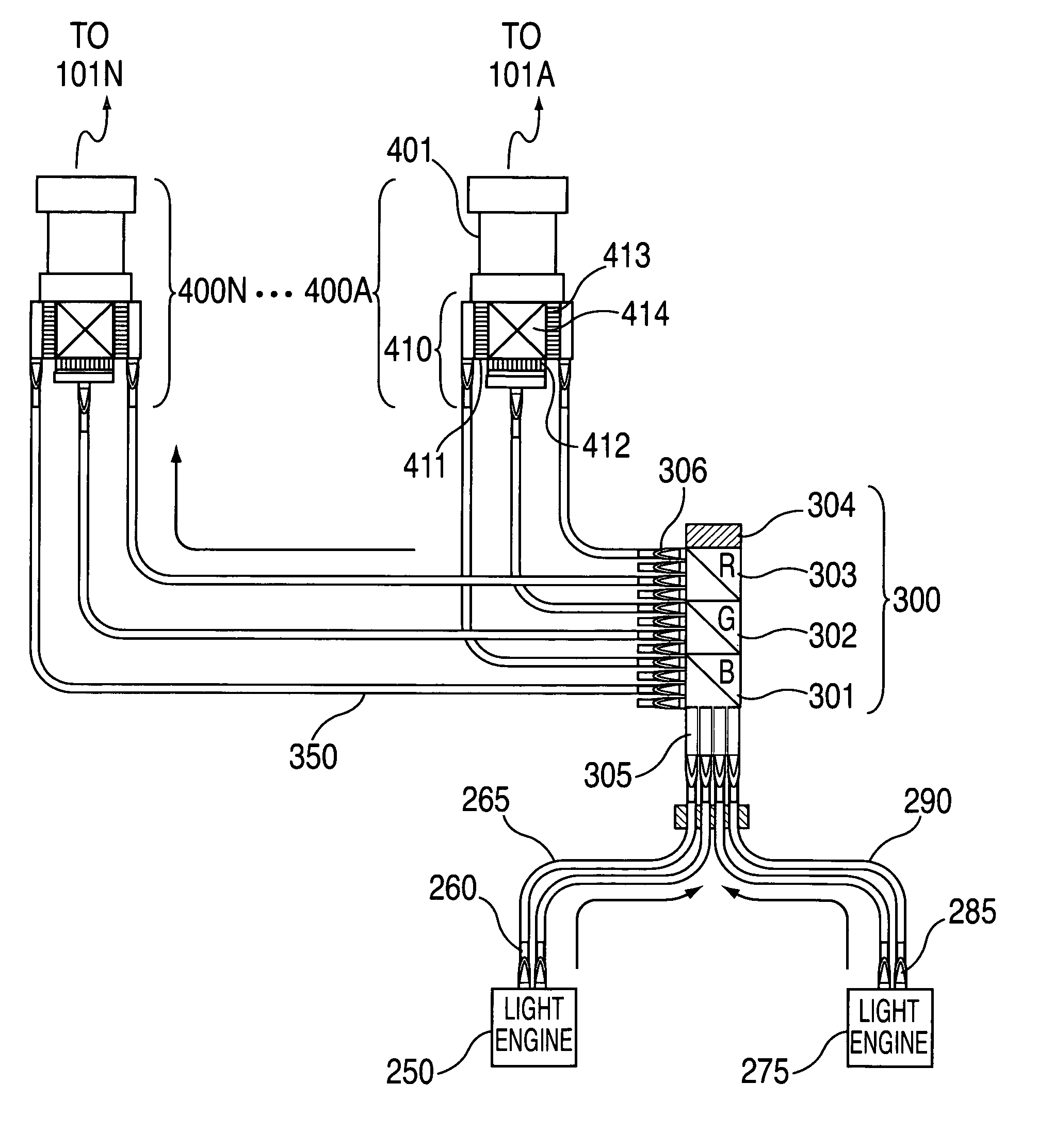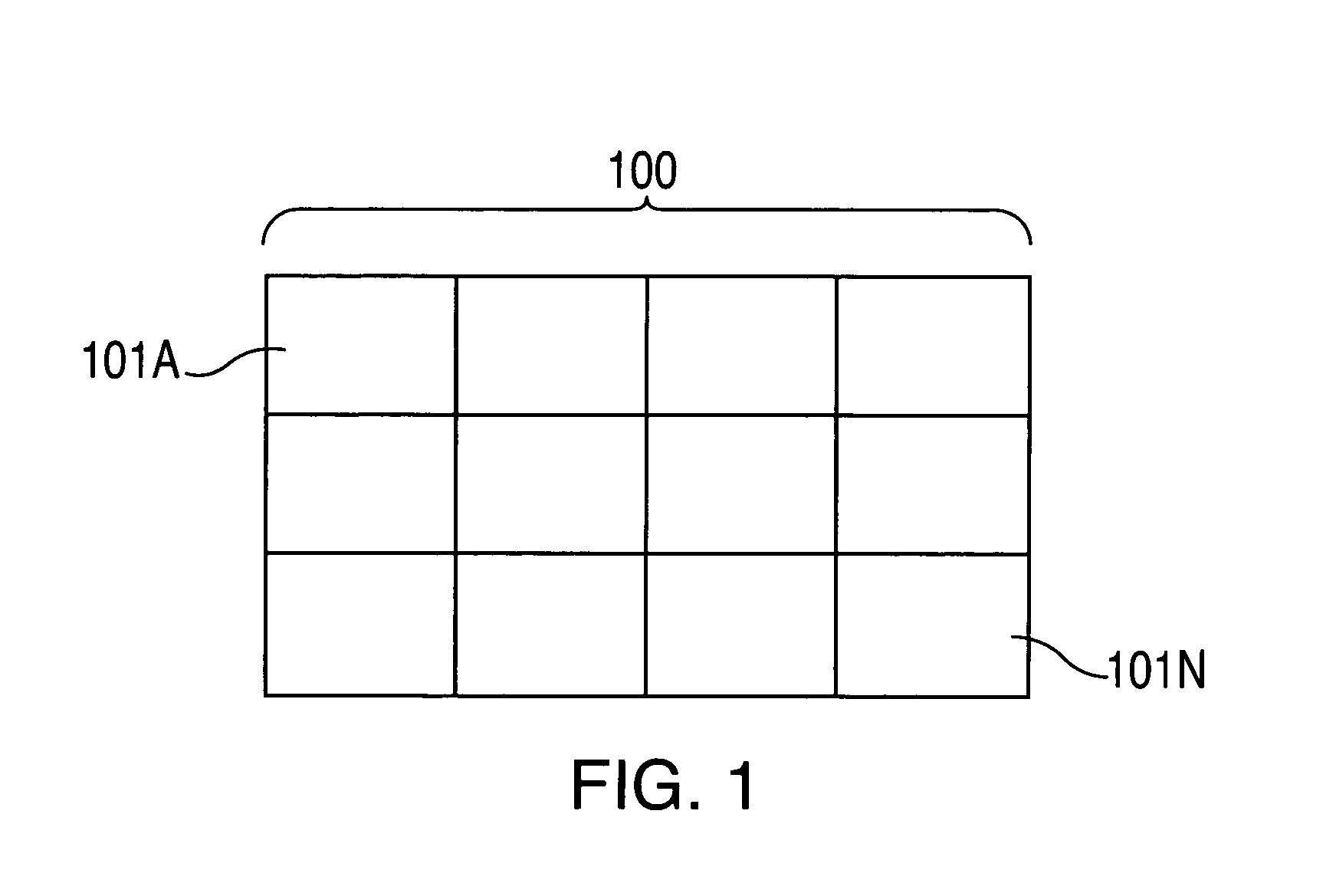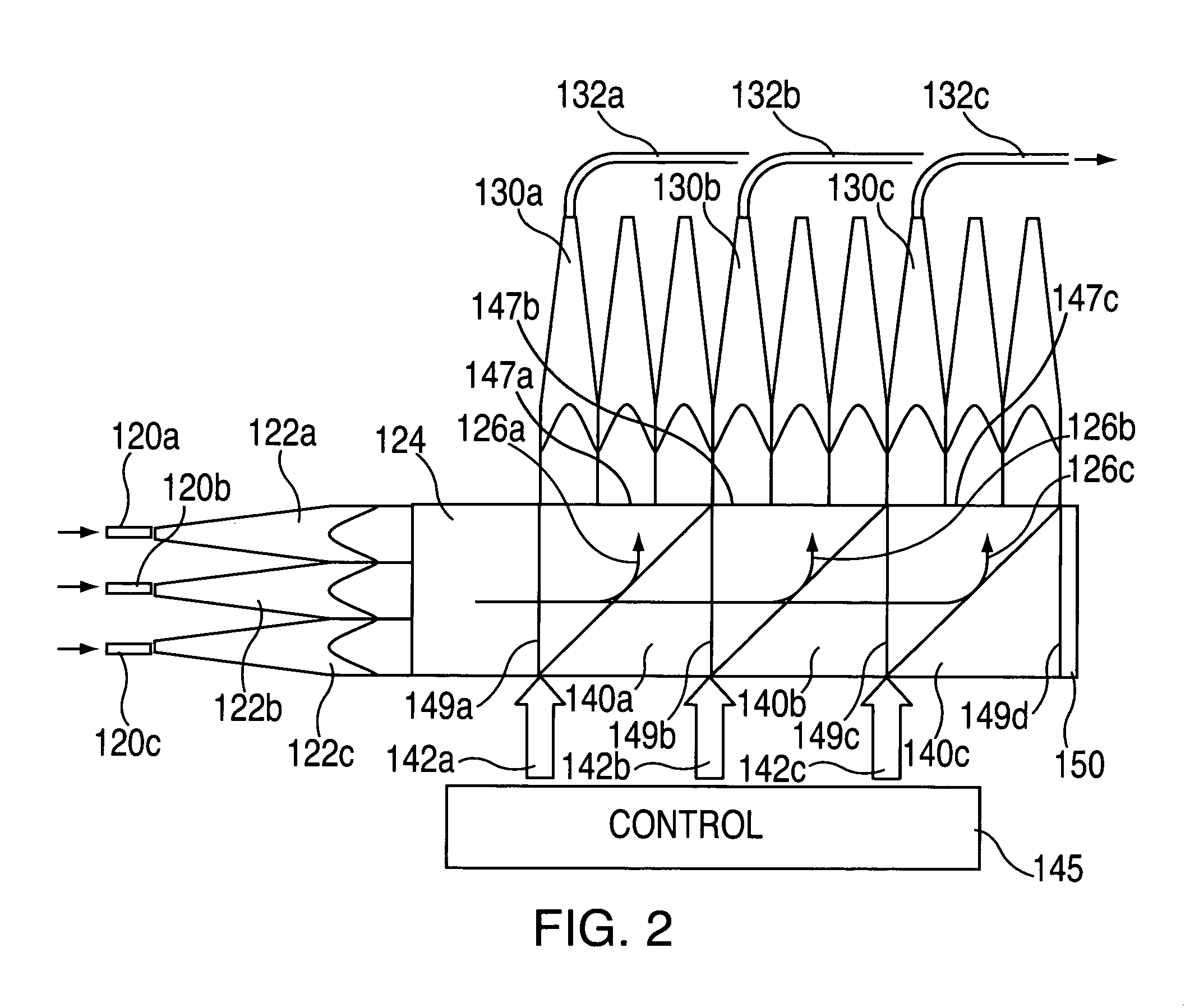Projection system utilizing fiber optic illumination
- Summary
- Abstract
- Description
- Claims
- Application Information
AI Technical Summary
Benefits of technology
Problems solved by technology
Method used
Image
Examples
Embodiment Construction
Mode(s) for Carrying Out the Invention
[0057]Referring first to FIG. 1, a tiled projected image 100 is composed of individual display tiles 101A . . . 101N. A preferred embodiment of my invention has a three-row by four-column array of display tiles as shown in FIG. 1. Further embodiments contemplated can have different tile configurations including non-rectangular display tiles, such as hexagons, and tile configurations where the composite projected display is non-rectangular, such as a triangle, or non-planar, such as a hemisphere.
[0058]Referring to FIG. 2, an array of fibers 120a, b, c provide a source of white light into an array of non-imaging morphing collimating elements (NIMCOLEs) 122a, b, c respectively. Each NIMCOLE interfaces with a round fiber, and then collimates the received energy from the fiber with a conical tapered feature, and then morphs the output from a round cross section to one of polygonal cross section (in this example, square). The polygonal cross section r...
PUM
 Login to View More
Login to View More Abstract
Description
Claims
Application Information
 Login to View More
Login to View More - R&D
- Intellectual Property
- Life Sciences
- Materials
- Tech Scout
- Unparalleled Data Quality
- Higher Quality Content
- 60% Fewer Hallucinations
Browse by: Latest US Patents, China's latest patents, Technical Efficacy Thesaurus, Application Domain, Technology Topic, Popular Technical Reports.
© 2025 PatSnap. All rights reserved.Legal|Privacy policy|Modern Slavery Act Transparency Statement|Sitemap|About US| Contact US: help@patsnap.com



